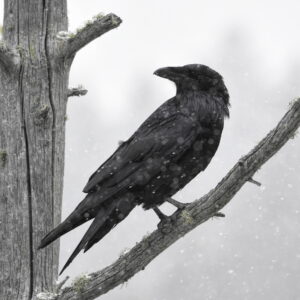Where Nature and Knowledge Meet: Reflections from Eeyou Istchee and the James Bay Coast
The first time I drove north along the Billy Diamond highway in Quebec, I couldn’t help but be in awe of the scale of Canada’s boreal forest. On this single access road into the coastal communities of Eeyou Istchee (ᐃᔨᔫ ᐊᓴᒌ) you have a good 8 hours to consider the way the black spruce grows tall and narrow and the way small tufts of growth sit at the top of each (for what reason, I have yet to deduce). As a heavy sun makes its way to the horizon, light catches on the filigree of tamarack in summer leaf that spots the road edges with soft green. Canadian shield bedrock breaks through at intervals, underlying the rolling landscape that guides abundant water into lazy rivers. Water that eventually works its way into James Bay, which is also our destination.
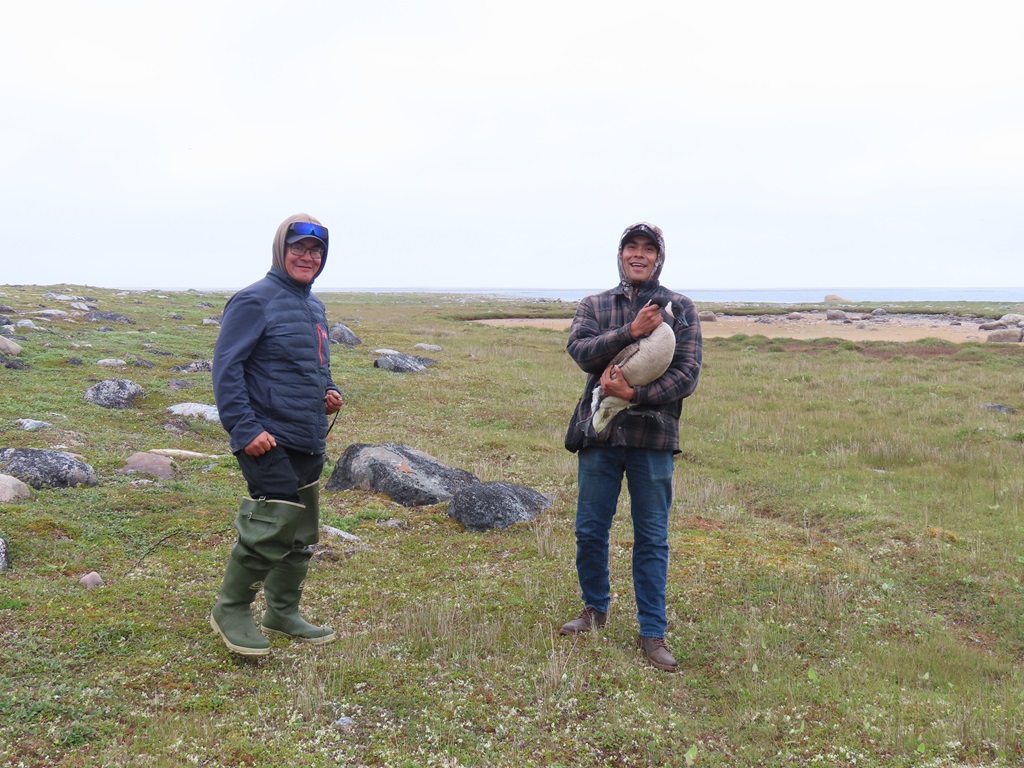
We are visiting James Bay to do coastal surveys focusing on birds and species at risk. This work is done in collaboration with the communities and in support of the Cree Nation Government’s work to conserve their lands and waters. The western science I learned, in tracking and recording species diversity, distribution and abundance is compiled, this data then shared with the Cree who can combine it with their Traditional Knowledge from living on and caring for this beautiful landscape. To my view, it is in many ways the best of both worlds when it comes to two-eyed seeing — the benefits of both systems being applied to make change.

As a visitor to the communities, I count myself very lucky to be there and to be able to speak with different community members and knowledge holders about the lands that they and their families have stewarded since time immemorial. Their knowledge of these spaces is woven into every aspect of life. For example, I have an interest in languages, and particularly love the way many of the words I have learned (mostly names for birds) also reflect some characteristic of that animal, some behavior or feature, such that to speak of that bird is to understand something of it or the world it inhabits. I can’t help but be impressed by those community members who speak their traditional languages. Contrary to what I had learned in school, the history of colonialism feels very close in time when I am here. The rejuvenation of this languorous language, full of long vowels, sh’s and lively consonants, sounds to me like a reclamation of identity. By trying my best to learn some of these words, phrases and the context that brought them to being, I gain so much and I aim to make a small personal step down a path to reconciliation.
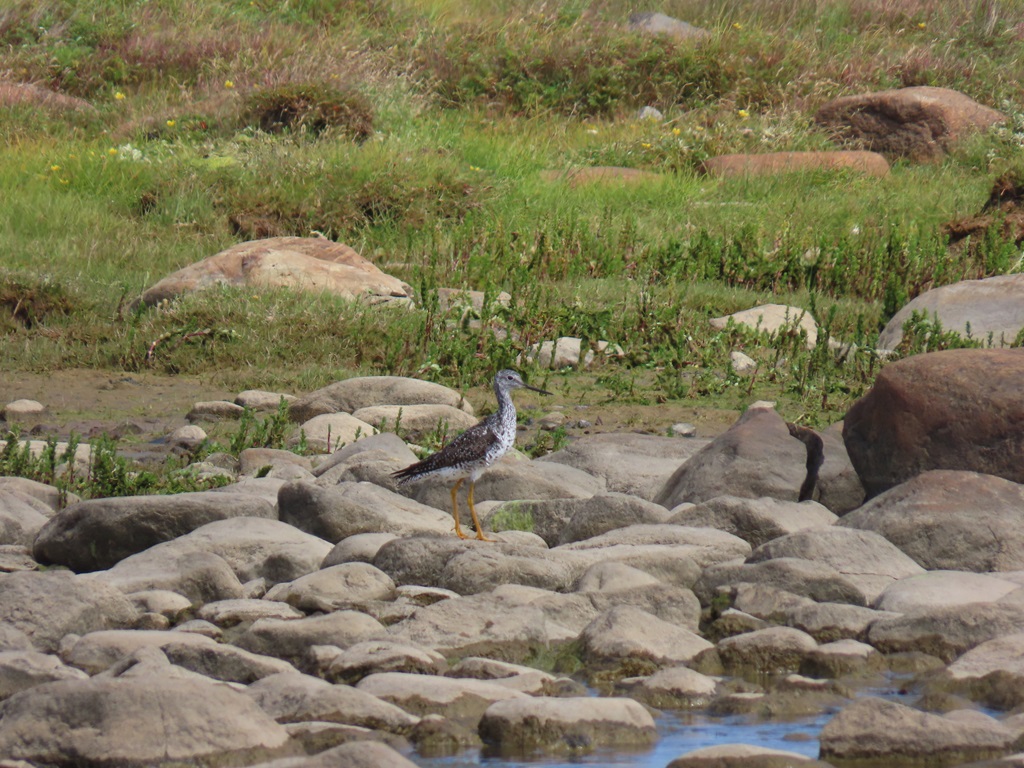
The pace and low cadence of the language also reflects my experience of how things happen in the communities: slowly and with intentionality. The fervor of productivity so ingrained in my day to day in the south can only be released. Success for the day is tied to unknowable qualities, such as the tides and the birds, rather than the tasks on my to do list. A good day has local boat captains who have been navigating the ever-changing coastline their whole lives take our survey team out on the bay. Survey areas have been identified in collaboration with tallymen, family appointed leaders who are responsible for the management of their trap-lines, and the local conservation staff. The air coming off this southernmost extension of the Arctic Ocean is always fresh with just a hint of salt. If it is blowing a little, the drone of mosquitoes and flies is kept at bay as we walk transects with binoculars and scopes along expansive mudflats, sucking in your boots with every step. Salt marsh grasses blow in the wind and shudder with the small things moving around at their base.
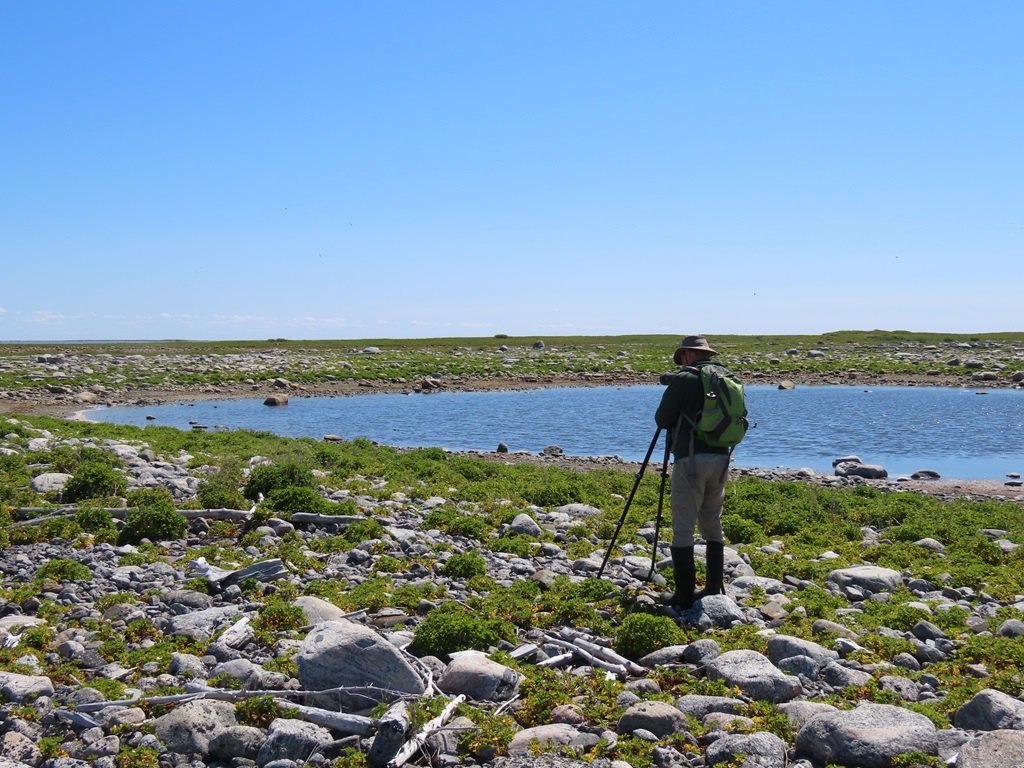
Occasionally you run across a Caribbean-level white sand beach. We walk among birds, scare off the odd fox, and hope to avoid encounters with polar bears. I am still learning to identify birds, and I am so used to looking for the smallest feature, like a differently colored feather or slope to a beak to identify species. Every time I go out with my team of southern bird researchers and local guides I learn so much. Like the sound and frequency of wing beats can be distinctive to an eider, the length of a song can foretell the weather, the resident geese will let you get nowhere near them, and mostly, that there is still so much to learn. Back in the boat with a notebook full of observations I hope to be able to decipher when I get back on land, I feel like a child wearing my parents’ clothes as I put on the giant floatation jacket and settle onto the wooden bench ready to ride the motorized canoes back to basecamp. Despite having released my conceptions of productivity and efficiency for the day, I am completely relaxed, feeling accomplished, a different way of being.
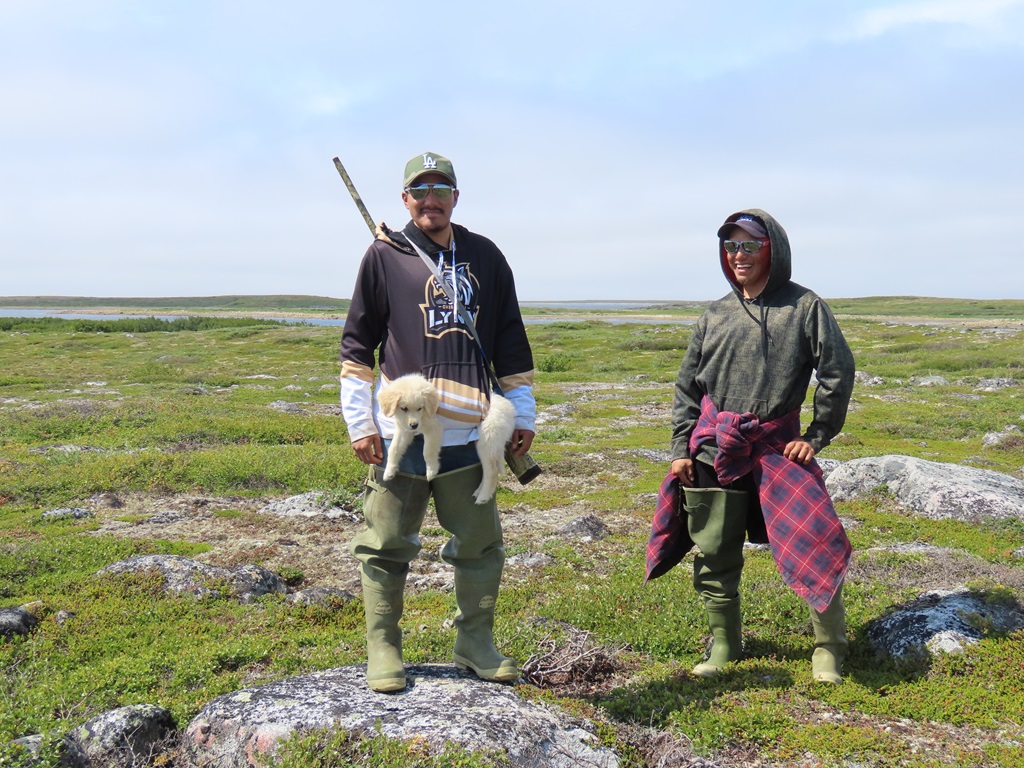
The experience of Nature has always been one that is integral to me and I count myself incredibly lucky that I get to work in conservation now. I came to Canada as a child, lucky to have an early exposure to Nature’s wonders. I collected wildflowers, stuck my fingers in tidepools, went running to see the light slice through a mossy forest or catch the splash of a whale breaching offshore. This curiosity has carried me through life, as a Nature lover, a traveler, a perpetual student I have been fortunate to encounter some of the great diversity that exists in this country and across the world. Yet part of me has always envied those whose roots are one and the same as the place they call home. I will never have the deep knowledge of a place that comes from the kind of background and culture of First Nation Peoples. But I am lucky to have the opportunity to learn from those who do. Despite a challenging history, especially in the conservation sector, I will try to move forward by working to hold space for the contributions and knowledge of Indigenous Peoples in how I approach my work and the world.
Would you like to commit to a better path? Support Indigenous Conservation efforts and leadership so that we can share your voice and values where they’re most needed.
Thank you to Audubon for their generous support.




